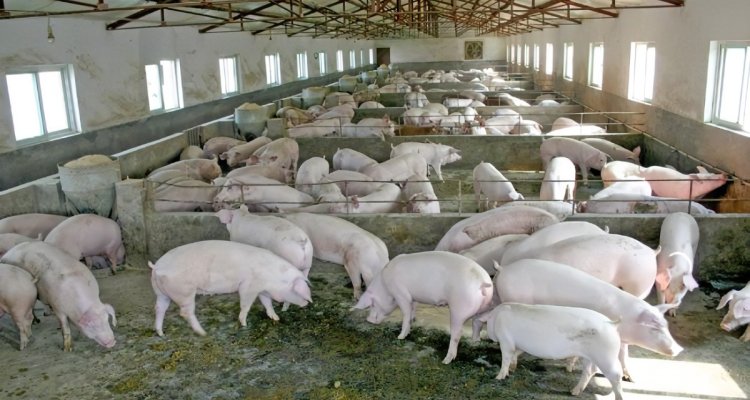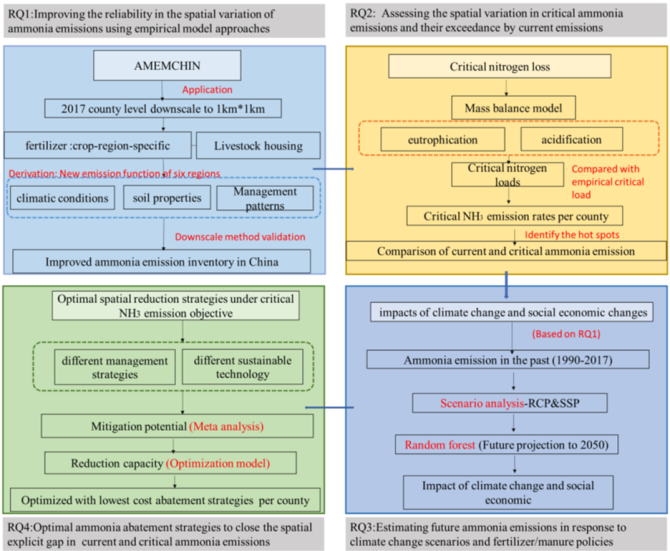
Project
Potential of agricultural management strategies to minimize the gap between current and critical ammonia emissions in China
Ammonia emission and related deposition affects the health of ecosystems. This project aims to quantify the spatial variation in ammonia emissions in China at a high- resolution, and to assess the benefits of ammonia emission reduction strategies. First, an advanced bottom-up ammonia emission model has been developed to improve the resolution. Next, critical ammonia emissions will be derived from critical nitrogen loads on ecosystems to assess critical ss emission exceedance hot spots in China. Finally, optimal management strategies will be identified to close the spatially explicit gap between current and projected ammonia emissions versus critical NH3 emissions.
Introduction
Excessive agricultural nitrogen (N) use causes environmental problems globally. Apart from effects on water quality by leaching and runoff of nitrate, , and on climate by nitrous oxide emissions, an important problem is the enhanced emission of ammonia (NH3). As a result of emissions and related deposition of NH3 and ammonium (NH4+), in combination with nitrogen oxides (NOx), mainly from industry and traffic, soils can become acidic and eutrophic, posing a threat to biodiversity in terrestrial ecosystems. Therefore, it is critical to quantify hot spots of the exceedance of critical ammonia emissions in view of related exceedances of nitrogen and acid loads on terrestrial ecosystems. This allows for spatially targeted emission reduction strategies.
Objectives
The aim of this research is to provide a spatial explicit methodology to produce high spatial resolution maps of current (the year 2017) and criticalNH3 emissions in China. In addition, the benefits of ammonia emission mitigation strategies on their ability to close the gap between current and critical NH3 emission will be evaluated. This research will contribute to an improved quantification of the spatial variability in NH3 emissions and the possibilities to reduce these emissions below critical environmental thresholds by both classic and innovative mitigation strategies.
Methods
In this project, a new empirical bottom-up model for agricultural cropland and livestock management for China (AMEMCHIN) is developed for a high resolution ammonia emission inventory. Next, critical ammonia emissions will be derived from critical nitrogen loads accounting for spatially explicit differences in ammonia emission and deposition, in NOx deposition and in the agricultural area in a county. Critical nitrogen loads will be with a mass balance model making use of soil indicators for eutrophication and acidification. Finally, the effects of various technological innovations and management measures will be evaluated including economic (costs), institutional (e.g., local Governmental support) and social aspects (e.g., farmers’ willingness to change the current practice).

(Expected) results
Expected results include four publications on:
- Spatial patterns of current ammonia emissions using a newly developed bottom-up method in China.
- Gaps between current and critical agricultural ammonia emissions for terrestrial ecosystems in China
- Projected agricultural ammonia emissions in response to different climate change scenarios and fertilizer policies in China.
- Optimal spatial reduction strategies to reduce the gap between current, projected and critical ammonia emissions in China.